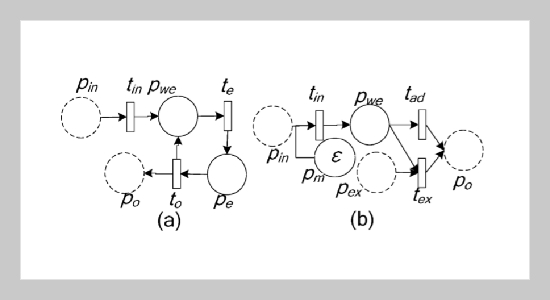REFERENCES
- [1] Lee, E. A., “Cyber Physical Systems: Design Challenges,” Proceedings of the 6th ACM Conference on Embedded Network Sensor Systems, New York, USA: ACM, pp. 225�238 (2008).
- [2] Sztipanovits, J., Stankovic, J. A. and Corman, D. E., “Industry-Academy Collaboration in Cyber Physical Systems (CPS) Research White Paper,” http://www. cra.org/ccc/docs/CPS-White%20Paper-May-19- 2009-GMUv1.pdf (2009).
- [3] Kiczales, G., Lamping, J., Mendhekar, A., et al., “Aspect-Oriented Programming,” Proceedings of the European Conference on Object-Oriented Programming, LNCS 1241, Springer-Verlag, pp. 220�242 (1997).
- [4] Chen, K., Chang, Y. C. and Wang, D. W., “Aspect-Oriented Design and Implementation of Adaptable Access Control for Electronic Medical Records,” International Journal of Medical Informatics, Vol. 79, No. 3, pp. 181�203 (2010). doi: 10.1016/j.ijmedinf.2009. 12.007
- [5] Tadao, M., “Petri Nets: Properties, Analysis and Application,” Proceedings of the IEEE, Vol. 77, No. 4, pp. 541�580 (1989). doi: 10.1109/5.24143
- [6] Ma, J. G., Huang, T., Wang, J. L., et al., “Underlying Techniques for Large Scale Distributed Computing Oriented Publish/Subscribe System,” Journal of Software, Vol. 17, No. 1, pp. 134�147 (2006). doi: 10. 1360/jos170134
- [7] Hnat, T. W., Sookoor, T. T., Hooimeijer, P., et al., “MacroLab: A Vector-Based Macroprogramming Framework for Cyber-Physical Systems,” Proceedings of the 6th ACM Conference on Embedded Network Sensor Systems, New York, USA: ACM, pp. 225�238 (2008). doi: 10.1145/1460412.1460435
- [8] Park, S., Kim, J. and Fox, G., “Effective Real-Time Scheduling Algorithm for Cyber Physical Systems Society,” Future Generation Computer Systems, Vol. 32, pp. 253�259 (2014). doi: 10.1016/j.future.2013.10. 003
- [9] Schneider, R., Goswami, D., Masrur, A., et al., “MultiLayered Scheduling of Mixed-Criticality Cyber-Physical Systems,” Vol. 59, No. 10, pp. 1215�1230 (2013).
- [10] Talcott, C., “Cyber-Physical Systems and Events,” In Software-Intensive Systems and New Computing Paradigms, Heidelberg: Springer-Verlag, pp. 101�115 (2008). doi: 10.1007/978-3-540-89437-7_6
- [11] Tan, Y., Vuran, M. C. and Goddard, S., “Spatio-Temporal Event Model for Cyber-Physical Systems. International Conference on Distributed Computing Systems Workshops on Cyber-Physical Systems,” IEEE Computer Society, pp. 44�50 (2009). doi: 10.1109/ ICDCSW.2009.82
- [12] Tan, Y., Vuran, M. C. and Goddard, S., “A Concept Lattice-Based Event Model for Cyber-Physical Systems,” Proceedings of the 1st ACM/IEEE International Conference on Cyber-Physical Systems, New York, USA: ACM, pp. 50�60 (2010). doi: 10.1145/ 1795194.1795202
- [13] Tang, L. A., Yu, X., Kim, S., et al., “Trustworthiness Analysis of Sensor Data in Cyber-Physical Systems,” Journal of Computer and System Sciences, Vol. 79, No. 3, pp. 383�401 (2013). doi: 10.1016/j.jcss.2012. 09.012
- [14] Pinto, M., Fuentes, L. and Fernández, L., “Deriving Detailed Design Models from an Aspect-Oriented ADL Using MDD,” Journal of Systems and Software, Vol. 85, No. 3, pp. 525�545 (2012). doi: 10.1016/j. jss.2011.05.026
- [15] Mehmood, A. and Jawawi, D. N. A., “Aspect-Oriented Model-Driven Code Generation: a Systematic Mapping Study,” Information and Software Technology, Vol. 55, No. 2, pp. 395�411 (2013). doi: 10.1016/ j.infsof.2012.09.003
- [16] Nafees, Q., “Composition Analysis of Multiple Aspects in Aspect Oriented Programs,” Processing of the 16th Asia-Pacific Software Engineering Conference (APSEC’09). IEEE Computer Society, pp. 223�230 (2009). doi: 10.1109/APSEC.2009.36
















